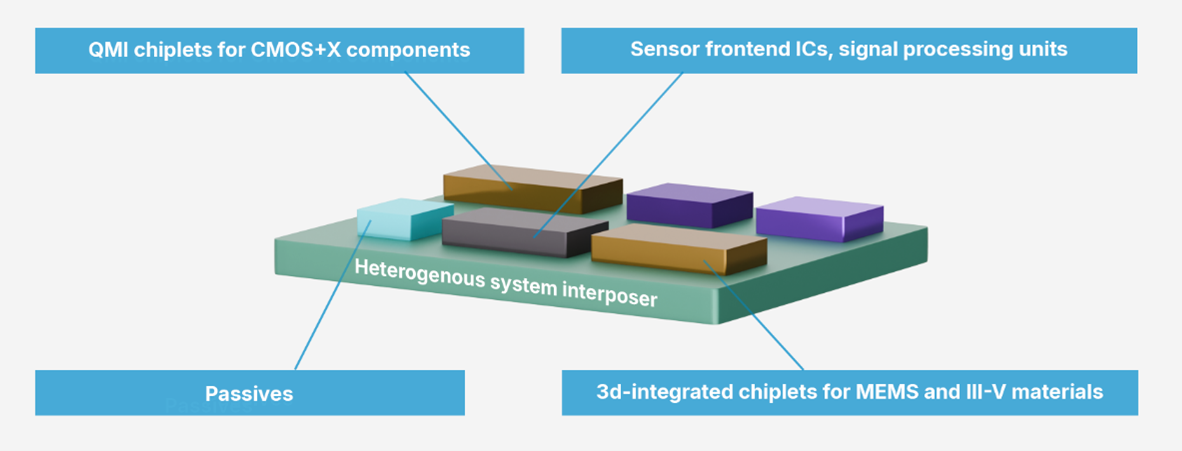
Multi-Material Sensor Demonstrator

Target
The Multi-Material Sensor (MMS) Demonstrator benchmarks the pilot line capabilities towards the design, processing and assembly of a modular, high-performance sensor system utilizing integrated and III-V).
Innovation
This demonstrator pushes the heterogeneous processing and integration capabilities by combining MMS-chiplets with heterogeneous system interposers and advanced sensor frontends (digital and mixed-signal). The latter can be augmented with additive neuromorphic accelerators for utmost energy efficiency and latency. The resulting IP portfolio shall offer design flexibility and fast development times for different applications. The processing steps are selected to be scalable for pilot series production. As such, the different combinations of components compose a versatile and generic approach towards end-to-end design flows and methodologies for chiplet-based advanced heterogeneous system integration.
Partners
- Fraunhofer ENAS: Heterogeneous system interposer and chiplet integration
- Fraunhofer ISIT: MEMS- and III-V sensor chiplets, glass interposer and WLP
- Fraunhofer IIS: CMOS and III-V sensor chiplets, component and system design, sensor frontends
- IHP: ASIC design, processing and integration
- Fraunhofer IMS: Opto sensor chiplets, photonic ICs and their CMOS integration
- Fraunhofer IMWS: Advanced characterization of components and interfaces
- Fraunhofer IPMS: Acoustic sensor chiplets and their CMOS integration, neuromorphic accelerator chiplet
Impact
Semiconductor sensor systems are an integral part of our everyday life. They are being used for various purposes including environmental monitoring, industrial process control, consumer electronics, security, medical, and automotive applications. Depending on their function, modern sensors are manufactured using a variety of processes and materials, commonly categorized based on their material compatibility requirements as CMOS, Post-CMOS, III-V, or MEMS. The integration of components from different categories is technologically challenging and usually not possible in a single process environment. Additionally, with the increasing complexity of our infrastructure and demands towards its energy efficiency, future sensor systems are required to become smart and easily adaptable to a variety of ecosystems. Referred to as smart sensor systems, they include additional features such as data processing, communication capabilities, and decision-making abilities, enabling more efficient and sophisticated data collection, analysis, and control in a wide range of applications. The MMS-demonstrator takes the initial steps to systematically approach these challenges for heterogeneous sensor systems.
 Advanced Packaging and Heterogeneous Integration for Electronic Components and Systems
Advanced Packaging and Heterogeneous Integration for Electronic Components and Systems